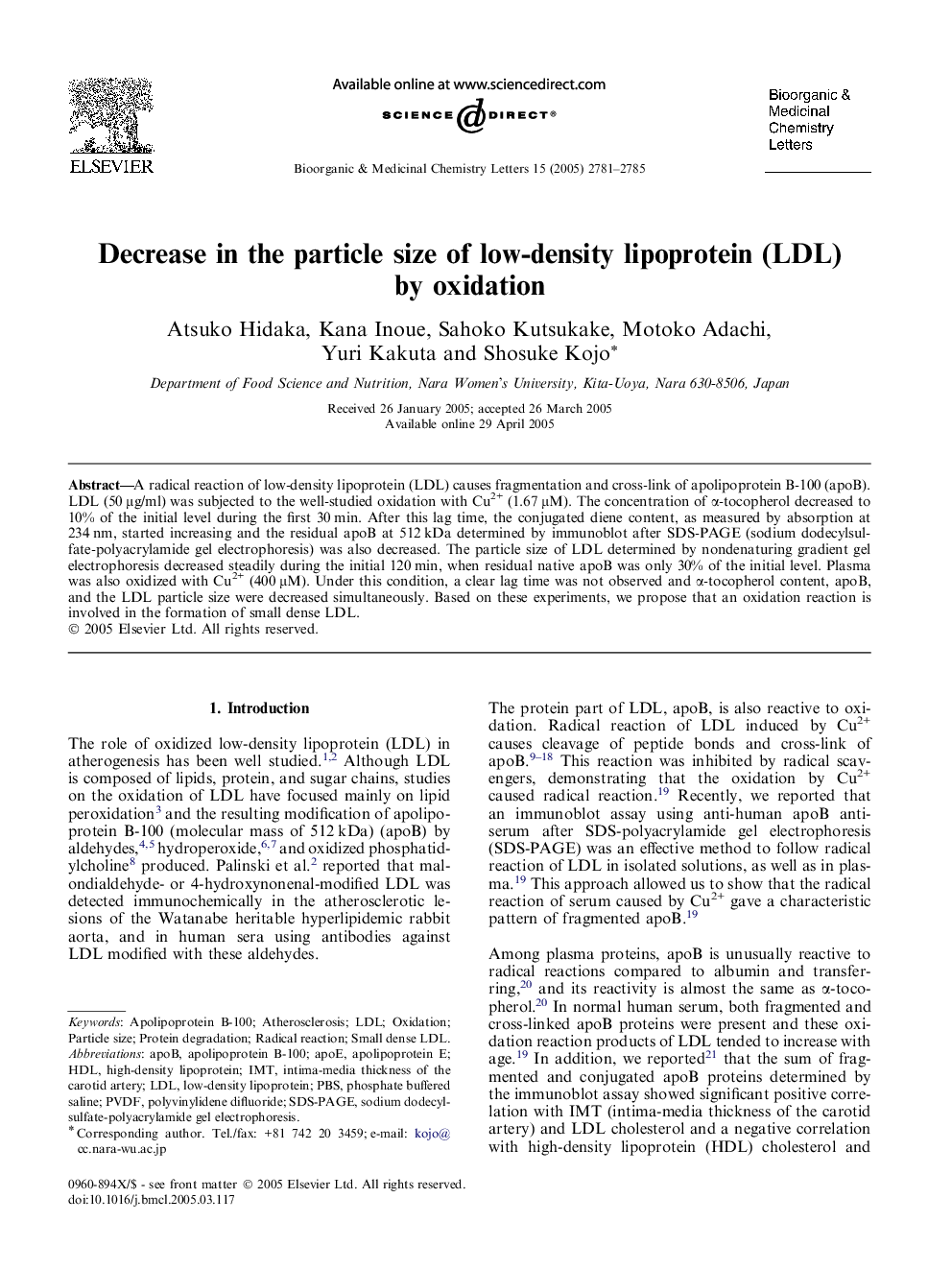| کد مقاله | کد نشریه | سال انتشار | مقاله انگلیسی | نسخه تمام متن |
|---|---|---|---|---|
| 1375991 | 981948 | 2005 | 5 صفحه PDF | دانلود رایگان |

A radical reaction of low-density lipoprotein (LDL) causes fragmentation and cross-link of apolipoprotein B-100 (apoB). LDL (50 μg/ml) was subjected to the well-studied oxidation with Cu2+ (1.67 μM). The concentration of α-tocopherol decreased to 10% of the initial level during the first 30 min. After this lag time, the conjugated diene content, as measured by absorption at 234 nm, started increasing and the residual apoB at 512 kDa determined by immunoblot after SDS-PAGE (sodium dodecylsulfate-polyacrylamide gel electrophoresis) was also decreased. The particle size of LDL determined by nondenaturing gradient gel electrophoresis decreased steadily during the initial 120 min, when residual native apoB was only 30% of the initial level. Plasma was also oxidized with Cu2+ (400 μM). Under this condition, a clear lag time was not observed and α-tocopherol content, apoB, and the LDL particle size were decreased simultaneously. Based on these experiments, we propose that an oxidation reaction is involved in the formation of small dense LDL.
Oxidation of isolated low-density lipoprotein (LDL) or plasma caused fragmentation of apolipoprotein B-100 and decrease in the particle size of LDL. Based on these experiments, we propose that an oxidation reaction is involved in the formation of small dense LDL, an atherogenic LDL subclass.Oxidation of LDL or plasma → Fragmentation of apolipoprotein B-100 and decrease in the LDL particle size.
Journal: Bioorganic & Medicinal Chemistry Letters - Volume 15, Issue 11, 2 June 2005, Pages 2781–2785